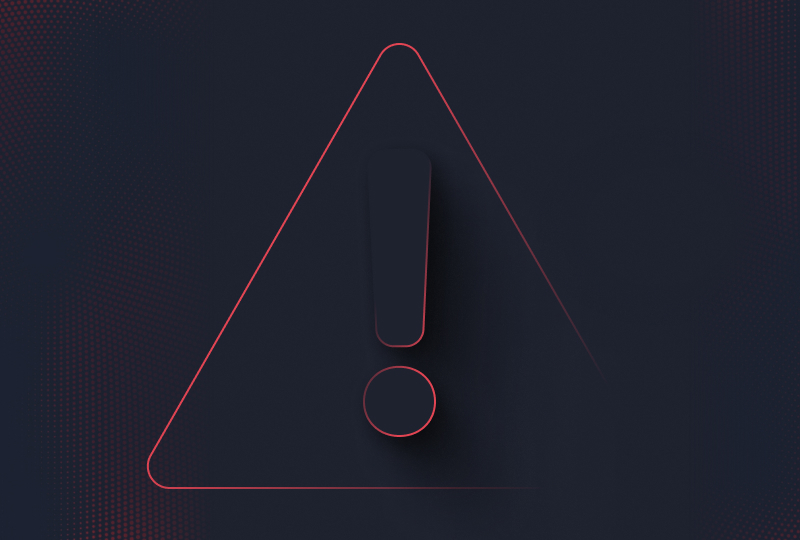2022-09-12

Improving Net Revenue Retention

11 min read
At Planhat, we believe customer success and experience is the one true north for SaaS companies. In order to truly perceive the overall health of a SaaS company’s customer journey, it’s important to understand what metrics to use, and more importantly what those metrics tell you. For example, there are some basic indicators that can tell you things like how many sales you’ve made or how satisfied your customers are with your product or service. Make no mistake, those measurements are important to understanding company performance, but they only provide a small piece of the overall puzzle.
Imagine going in for a physical and your doctor only checking blood pressure or heart rate. Sure, those numbers are important and can even be indicative of some underlying issues. However, to get a full understanding of just how healthy you are, you would want to look at a whole compilation of data points ranging from blood work to your energy levels and everything in between.
Coming back to the SaaS realm, that compilation of data can be represented in a handful of advanced analytics or metrics. One of the more important and comprehensive customer success metrics, and the focal point of this blog, is net revenue retention. In this article, we look at net revenue retention in SaaS and go over topics like:
-
Gross retention vs net retention in SaaS
-
How to complete SaaS retention rate calculations
-
Why net revenue retention is important
-
SaaS net retention benchmarks
-
How to improve net revenue retention
What Is Net Revenue Retention?
Net revenue retention (also known as net dollar retention) calculates total recurring revenue (including upsells) minus churn in revenue over a certain period of time. Before we can break that down in more detail, it’s worth noting that there are quite a few terms that are either similar or related to net revenue retention. Therefore, it’s important to make sure we distinguish between a few.
When searching NRR net dollar retention on Investopedia or Google, you will likely see terms like MRR, ARR, Upsells, Cross-sells Churn, Expansions, Contractions, and Gross Revenue Retention.
-
Monthly Recurring Revenue (MRR) is the predictable total revenue generated by your company from all active subscriptions, services, and purchases in a particular month. For example, if a customer signs a six-month contract, their revenue becomes a part of your MRR over the next six months since you know it will be coming in.
-
Annual Recurring Revenue (ARR) is the same thing as MRR, just normalized for a single year as opposed to a single month. In the same way the MRR looks at predictable revenue for a given month, ARR looks at the value of subscriptions over a year’s time.
-
Upsells refer to taking an existing recurring customer and convincing them to purchase a more expensive subscription, upgrade, or service package.
-
Cross-sells are similar to upsells, but where an upsell gets customers to upgrade to a larger subscription, a cross-sell adds features and services to their existing plan.
-
Churn is also known as the rate of attrition and refers to the amount that a business loses over a period of time. In terms of revenue retention, churn indicates the amount of revenue lost over that period of time.
-
Expansions, often considered a key to SaaS success, refers to any revenue earned in excess of your customer’s initial contract. This can come in the form of the previously mentioned upsells and cross-sells.
-
Contractions or downgrades are the exact opposite of expansions and occur when an existing customer scales back their subscription or discards additional features.
-
Gross Revenue Retention (GRR) is similar to NRR, but it only looks at the percentage of revenue that you retained over a period of time, not accounting for expansions of any kind.
Now that we’ve got those terms sorted out, we can break down net revenue retention a bit further, while comparing it to its often conflated sibling, gross revenue retention.
Net Revenue Retention vs. Gross Revenue Retention
As we alluded to earlier, net and gross revenue retention look at fairly similar data points, with one major exception…expansion revenue. In simple terms, gross revenue retention looks to determine how much revenue you retained over a period of time. Net revenue retention seeks to find out how much revenue you retained and expanded over that period of time. At this point you are probably wondering, how do you calculate revenue retention rate? Let’s find out.
Gross Revenue Retention Formula
Depending on the period of time you want to examine, the formula for gross retention in SaaS will look something like this:
GRR = (Beginning ARR or MRR -Contractions- Churn) / (Beginning ARR or MRR)
Remember, in this formula MRR can be calculated by multiplying the number of annual customers by the average monthly revenue they bring in. ARR can be found by multiplying the MRR by twelve.
Net Revenue Retention Formula
Depending on whether you want to look at NRR over a year or a month, the formula for net revenue retention is as follows:
NRR = (Beginning ARR or MRR + Expansions - Contractions - Churn) / (Beginning ARR or MRR)
Both of these formulas will produce a ratio, so to calculate the gross or net revenue retention rate, simply multiply that ratio by 100. Let’s take a look at an example, just to make it crystal clear.
Net Revenue Retention Chart Example
Imagine a company, ARG Inc., has the following data:
-
Average monthly revenue per customer = $500
-
Number of existing customers = 100
-
Amount of expansion earnings for the given month = $250
-
Amount of expansion earnings for the year = $4000
-
Contraction amount for the given month = $100
-
Downgrade amount for the year = $2000
-
Churn for the given month = $50
-
Churn for the year = $1500
Now, at first glance without doing any calculations, it might look like this company is doing fine. But for us to really know what’s going on, we need to start doing some number crunching.
-
For starters, we’d calculate MRR by multiplying the $500 x 100 customers. We learn that our MRR is $50,000.
-
Next we find our ARR by multiplying the $50,000 by 12, giving us an ARR of $600,000 per year.
-
Now that we know these two metrics, we can use some of the other raw data and start computing our net revenue retention.
-
To find monthly net revenue retention, we are going to take our beginning MRR of $50,000, add expansions of $250, subtract our $100 of contractions and our $50 in churn. That will give us $50,100 which we divide by the original MRR of $50,000 and we get 1.002. We multiply that by 100 to get a monthly net retention rate of 100.2%
-
To find our annual net revenue retention, we are going to take the ARR of $600,000, add $4,000 in expansions, subtract $2000 in contractions and another $1500 in churn. That will give us $600,500 which we divide by our original ARR of $600,000 to get a ratio of 1.0008. Multiplying that by 100 to get our NRR rate of 100.08 %.
It’s worth noting that in this example, the calculations were fairly straightforward and clean, and the NRR rates were actually quite close. In a more complex SaaS setting, these rates can vary by several percentage points, with certain months being more variable in terms of expansions or contractions.
How Do You Increase Net Revenue Retention?
There are quite a few ways you can increase your NRR, but they basically boil down to two different methods:
-
Increasing the good stuff like expansions
-
Reducing the bad stuff like contractions and churn
One way to increase expansions is to use modals to push upgrades. For example if you have a freemium subscription model, users likely have limits on their actions. If they try and conduct an action that is restricted, a modal can pop up with an easy to click “Upgrade” button. This provides an organic opportunity to push an upgrade since it will immediately help resolve a pain point for your customer.
To reduce customer churn, it can be beneficial to do something as simple as conducting a churn survey. On a churn survey you will likely say something like “we are sorry to see you go” and follow it up with a “Could you tell us why you left?” Then you can either provide options for the user to select or leave an answer box for them to fill out. You can then make any necessary changes to your process or product, depending on the feedback you receive.
To reduce contractions (and churn as well), it might be helpful to offer in-app self-service support. This can help customers to not only solve their own problems but also become more familiar with your platform. In turn it will reduce the number of help tickets you are responsible for meaning you have more time freed up to support other areas. It also means customers are more likely to stick around since they will learn how to use your platform like a pro.
Why Is NRR Important for SaaS?
As we alluded to in the introduction of this post, a good customer experience is paramount to the success of SaaS companies. The SaaS market is saturated with similar products and services as well as ultra competitive companies. That means customer success is one of the few ways to truly differentiate yourself from the competition.
So, how does NRR relate to customer success? Perhaps a better question would be what is the KPI for retention, or key performance indicator? The answer is net revenue. Just take a look at our thought leadership blog on it.
Retention, expansions, and churn (go ahead and throw contractions in there, too) are the most important indicators of customer satisfaction.
-
Is a customer satisfied enough with your product to keep subscribing to your platform?
-
Are they happy with the customer support they are receiving enough to stay a loyal customer?
-
Are they so smitten with your company that they want to buy additional products and services from you because you are so valuable to them?
-
And if the answer to any of these questions is no, are they contracting or even churning their business?
All of these questions are answered in NRR and tangibly measured. When you look at the net revenue retention rate, essentially you are looking at the percentage of customers that CS is satisfying. That begs the question, what is a good net revenue retention rate?
What is Good Net Revenue Retention?
Intuitively, you might think that a good NRR rate is 100%. While you’re not wrong, the idea of a “good” rate varies from company to company and industry to industry. In some industries, for example, good net revenue retention benchmarks are set upwards of 100% where the focus is on upselling and expanding the revenue from existing customers. In other companies, a decent NRR rate might fall between 90-100%. It is worth noting that a lower NRR does not necessarily mean your company is in trouble, as it’s possible for new customers to offset the churn in revenue. With that said, though, if you have trouble retaining customers or revenue, it is probably indicative of a larger issue somewhere in your organization.
Understand and Increase Net Revenue Retention with Planhat!
Net revenue retention is the most important customer success metric. Don't just take our word for it, see what the experts in this webinar have to say about it. Of course, with any kind of new metric, getting used to it or setting it up can seem daunting.
Keeping track of all that data plus trying to constantly remember how to calculate NRR might even sound like a hassle. The good news is with Planhat’s customer success platform, it’s never been easier to:
-
Track customer success data like NRR, usage, expansion opportunities, and more
-
Set up automations to contact customers at the most opportune times
-
Collaborate with other teams seamlessly
-
Create customer health scores
-
Discover valuable insights that can increase your overall company-wide success
We also make it easy to integrate our platform with other major SaaS tools like Hubspot, for example. In fact, in one case study of integrating Planhat with Hubspot, a SaaS company saw an increase of 24% in upsell revenue. So, if you’re ready to get started with NRR and Planhat, reach out for a demo today!
Join our newsletter!
Receive the latest news, updates, and invitations to our events.
Being data-driven, are we there yet?
Being data-driven should be standard nowadays, but many organizations still struggle with it. Every company wants to be data-driven, but putting it into practice is the tough part.
How to transition from a cost center to a profit center in CS
Many in CS shy away from the commercial aspects of the business, but it's a missed opportunity to keep the conversation moving around maximizing and driving value for customers.
It's worth the risk: Identifying and managing risk in CS
When faced with risk in CS, it’s hard to know what the first step should be. We've developed an actionable plan based on experience from three CS experts.
Learn more about
Planhat
Drop your email and let us show you our platform!











